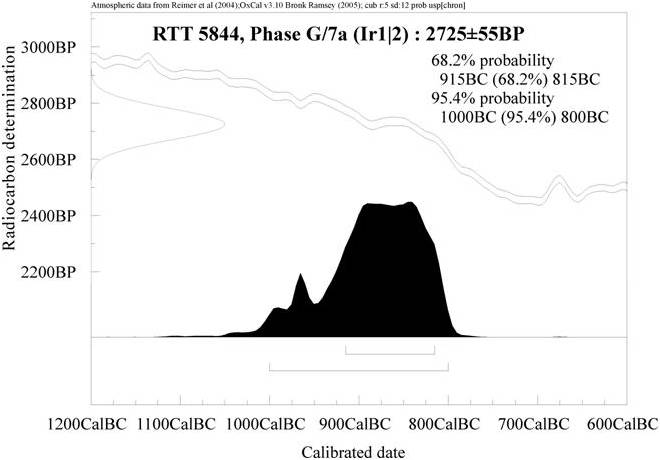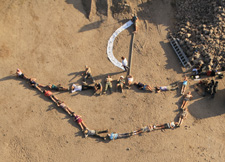Iron Age Chronology
Iron Age Chronology and the United Monarchy of David and Solomon is the subject of an ongoing controversy in both biblical studies and archaeology. Doubts have been raised about the historicity of the biblical account, and consequently about the ascription of archaeological strata to this period. In bare archaeological terms, the debate is reduced to a chronological question - when does Iron Age I end and Iron Age II begin? Rural, non-urban populations showing little signs of social hierarchy settled the highlands of Judea, Samaria, and Galilee in Iron Age I. These undergo a process of urbanization and state-formation during Iron Age II. The ‘conventional’ chronology, which places the Iron Age I|II transition (in Dor terminology: the Ir1|2 transition) around 1000 BCE, is based on the biblical dating of the rise of the Jewish nation-state of David and Soloman. The 'low chronology', inspired by the ‘minimalist’ or ‘nihilist’ stance, which regards the biblical narrative of this period as myth, dates the Iron Age I|II transition later, c. 900 BCE.
 Though Dor stands somewhat apart from these developments, it plays a
key role in this debate. It has an uninterrupted sequence of urban
occupation levels spanning Iron Age
I and Iron Age II. We can thus
use the archaeology of Dor to reconstruct the development of
Phoenician pottery in these phases. This pottery was extensively
exported and is found in most major Iron Age centers in Israel and
abroad. Conversely, there are large amounts of foreign imports at
Dor. The Phoenician sequence can
therefore correlate the various chronologies in the Levant and across
the Mediterranean and thus transcend obstacles of regionalism.
Though Dor stands somewhat apart from these developments, it plays a
key role in this debate. It has an uninterrupted sequence of urban
occupation levels spanning Iron Age
I and Iron Age II. We can thus
use the archaeology of Dor to reconstruct the development of
Phoenician pottery in these phases. This pottery was extensively
exported and is found in most major Iron Age centers in Israel and
abroad. Conversely, there are large amounts of foreign imports at
Dor. The Phoenician sequence can
therefore correlate the various chronologies in the Levant and across
the Mediterranean and thus transcend obstacles of regionalism.
The radiocarbon laboratory at the Weizmann Institute of Science has joined the Dor team to carry out an extensive 14C program to establish the absolute date of the Iron Age 1|2 transition at Dor and at other sites. This projected has been supported by the Israel Science Foundation.
